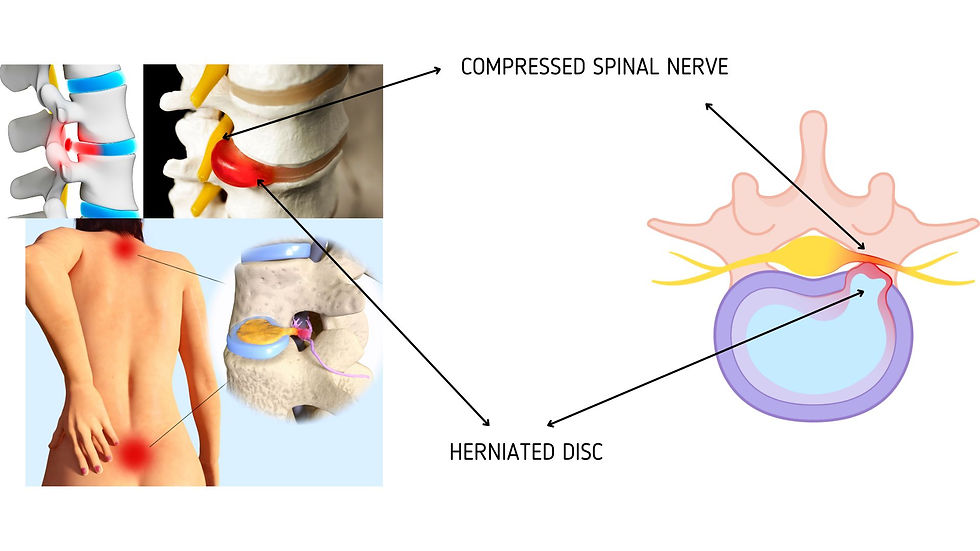Let’s explore the world of “slip/herniated discs”, where the pain is unbearable, but the treatment is not! As a physiotherapist with years of experience in treating slipped discs, I can assure you that this condition is not as scary as it sounds. With the right treatment plan and necessary precautions, you can easily recover from it in a painless way.
So, what is a prolapsed disc or slip disc? Before understanding slip disc let us first understand what is a disc.
Our spine is made up of 33 vertebrae and in between 2 vertebrae, there is a jelly-like concave cushion called an intervertebral disc. There are in all 23 discs. 6 in the neck region, and 12 in the mid-back region.

The outer part of the disc is made up of collage fibres which are elastic in nature &this outer part is called the “ Annulus Fibrosus”
The inner part is made up of a squishy substance called nucleus pulposus &this inner part is made up of water.
IMPORTANCE OF A DISC :
Discs act as shock absorbers for the spine. They act as cushions between the 2 vertebrae and prevent them from grinding together.
The disc provides stability to the spine when the spine is subjected to various tensile, compressive, or rotatory stress.

Excessive stress on the spine e.g. Lifting heavy objects from the floor causes damage to the annulus fibrosus & the nucleus pulposus which is normally located within the center of the disc herniates. This herniated material compresses the spinal nerve causing severe back pain & leg pain.
SYMPTOMS :
If there is a slip disc in the neck region patient gets :
Pain in the neck, and trapezius, in the arm, forearm, hand, or near the shoulder blade in the upper back.
Tingling &numbness in the hands.
In severe cases weakness in arms and hands.
If there is a slip disc in the lower back region, the patient gets :
Pain in the low back, buttocks, back of thigh, and calf. Pain radiating down the leg is called “sciaticd” which means compression of sciatic nerves due to disc herniation.
Tingling and numbness in the leg
weakness in the leg and foot.
loss of sensation in the leg or foot.

TREATMENT :
Mild Pain or severe pain, don’t ignore your symptoms. Consult a physio who is specialized in the spine. Advanced spine physiotherapy techniques like :
Spine Manual therapy
Mckenzie protocol
Spinal mobilization
-can cure a patient completely in a few weeks and the patient can resume his/her normal activities.
Once you have recovered remember :
Maintain good posture: Use a lumber roll for your chair. It supports your low back curve and prevents back pain. Your computer screen should be at eye level, your arm & elbow should be at a 90° angle, similarly your hip and knee should also be at a 90° angle while sitting. Use footrest.
Take frequent breaks: Get up from your chair every 30 minutes, walk a few steps, stretch, and sit back.
Exercise regularly: Stretch and strengthen your back every day.
Avoid lifting heavy objects.
So next time you get a backache don’t worry, your physio is just a phone call away. Discuss with your physio and take necessary steps as early as possible and prevent complications and surgeries in the future.
Wish you a happy and healthy spine!

Comments